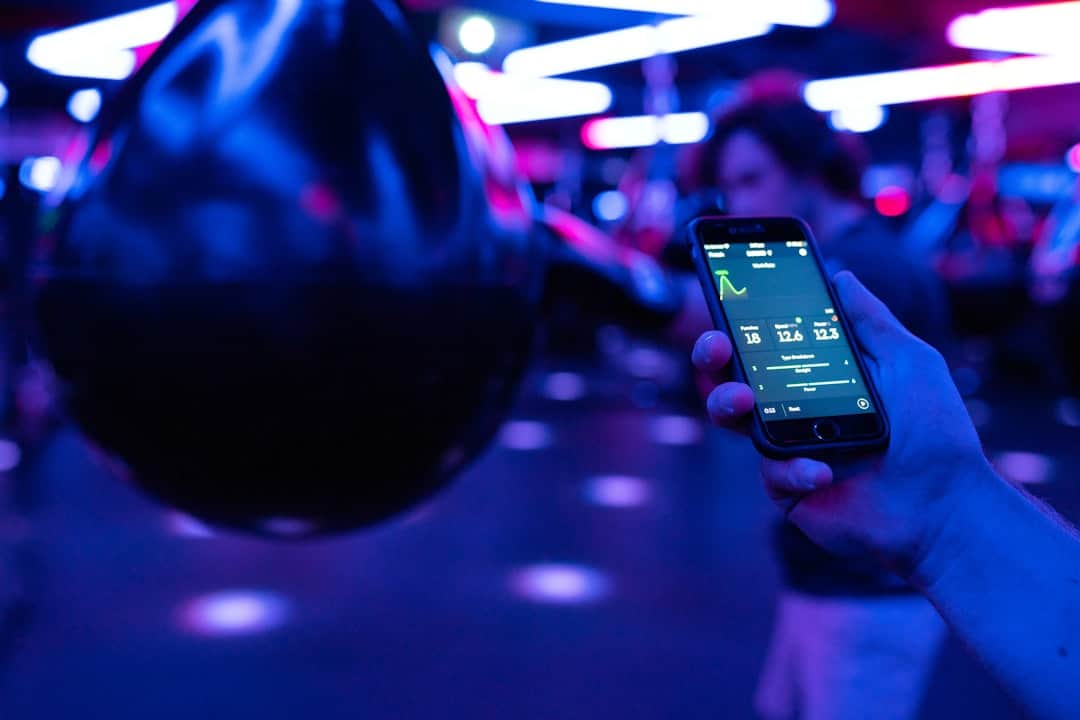The concept of aging in the metaverse presents a fascinating intersection of technology, identity, and human experience. As virtual environments become increasingly sophisticated, they offer a unique platform for individuals to explore their identities, including the aging process. In the physical world, aging is an inevitable journey marked by biological changes, social roles, and personal experiences.
However, in the metaverse, aging can be redefined and experienced in ways that challenge traditional notions. Users can create avatars that reflect their desired age, appearance, and even personality traits, allowing for a fluid exploration of identity that transcends the limitations of the physical body. This flexibility raises intriguing questions about how we perceive age and its significance in our lives.
Moreover, the metaverse allows for a more nuanced understanding of aging by enabling users to engage with different life stages in a virtual context. For instance, individuals can choose to embody their younger selves or experiment with older avatars, providing a unique opportunity to reflect on their life experiences and aspirations. This exploration can foster empathy and understanding across generations, as users interact with avatars representing various ages and backgrounds.
The metaverse thus becomes a space not only for entertainment but also for personal growth and social connection, where the concept of aging is not merely a biological process but a rich tapestry of experiences that can be shared and understood in new ways.
Key Takeaways
- Aging in the Metaverse is a concept that raises questions about the impact of time on digital identities and virtual communities.
- Avatar aging has the potential to significantly impact our digital identities, raising questions about the evolution of avatars in the Metaverse.
- VR lifespans in the Metaverse present opportunities for longevity and the potential for new experiences and interactions.
- Navigating the evolution of avatars in the Metaverse requires an understanding of digital identity growth and the implications of age progression.
- The impact of age progression on virtual communities in the Metaverse raises important ethical considerations and implications for social dynamics.
Avatar Aging: How Will It Impact Our Digital Identities?
The Impact of Avatar Aging on Digital Identity
The aging of avatars in the metaverse has profound implications for our digital identities. As avatars serve as our representations in virtual spaces, their appearance and characteristics can significantly influence how we are perceived by others. The ability to age avatars introduces a dynamic element to digital identity, allowing users to navigate different life stages and experiences.
Authentic Representation and Social Interactions
This capability can lead to a more authentic representation of oneself, as individuals may choose to reflect their real-life age or opt for an entirely different persona that resonates with their aspirations or fantasies. The choice of avatar age can also impact social interactions, as younger or older avatars may elicit different responses from other users based on societal stereotypes and expectations associated with age.
Reflections of Societal Attitudes Toward Aging
The process of avatar aging can serve as a mirror reflecting our attitudes toward aging in society. If users predominantly choose to create youthful avatars, it may indicate a cultural bias favoring youthfulness and vitality over the wisdom and experience associated with older age. Conversely, embracing older avatars could challenge societal norms and promote a more inclusive understanding of aging.
Implications for Self-Perception and Societal Values
This dynamic interplay between avatar aging and digital identity raises essential questions about self-perception and societal values. As users navigate their virtual lives, they may find themselves grappling with the implications of their choices, leading to deeper reflections on how they wish to present themselves in both digital and physical realms.
VR Lifespans: Understanding the Potential for Longevity in the Metaverse

The concept of lifespans within virtual reality (VR) environments introduces intriguing possibilities for longevity and existence beyond physical limitations. In the metaverse, users can create avatars that exist independently of their biological bodies, allowing for a form of digital immortality. This raises questions about what it means to live a life in a virtual space where time can be manipulated, and experiences can be curated without the constraints of aging.
Users may choose to extend their presence in the metaverse indefinitely, exploring new experiences and relationships without the physical decline associated with aging. This potential for longevity could redefine our understanding of life stages and personal growth. Moreover, the implications of VR lifespans extend beyond individual experiences; they also impact community dynamics within the metaverse.
As avatars age or remain ageless, virtual communities may evolve in ways that reflect these changes. For instance, communities could form around shared experiences of aging or agelessness, fostering connections among users who resonate with similar life stages or perspectives. Additionally, the concept of legacy takes on new meaning in the metaverse; users may leave behind digital artifacts or memories that persist long after they have chosen to step away from their avatars.
This interplay between individual agency and communal experience creates a rich tapestry of interactions that challenges traditional notions of life and legacy.
As users engage with the metaverse over time, their digital identities undergo significant growth and evolution. The process of avatar customization allows individuals to express themselves creatively while also reflecting their personal journeys. Over time, as users experience various life events—be it milestones like graduation or personal challenges—they may choose to update their avatars to mirror these changes.
This evolution is not merely cosmetic; it encapsulates the essence of personal growth and transformation that occurs throughout life. The metaverse thus becomes a canvas for self-expression where users can document their journeys through visual representation. Additionally, this growth in digital identity raises questions about continuity and change within virtual spaces.
As avatars evolve, how do users maintain a sense of self? The metaverse offers tools for memory preservation, allowing users to retain aspects of their previous avatars while integrating new features that reflect their current selves. This balance between continuity and change fosters a deeper connection between users and their avatars, creating a sense of belonging within virtual communities.
Furthermore, as users navigate this evolution, they may find themselves engaging with others who share similar experiences or challenges, leading to richer social interactions that transcend mere aesthetics.
Metaverse Age Progression: Examining the Impact on Virtual Communities
The phenomenon of age progression within the metaverse has significant implications for virtual communities. As avatars age or evolve over time, they contribute to a diverse tapestry of experiences that enrich community interactions. Older avatars may bring wisdom and perspective to discussions, while younger avatars might infuse energy and innovation into collaborative projects.
This diversity fosters an environment where different viewpoints are valued, encouraging dialogue across generational lines. The ability to represent various ages within virtual communities allows for a more inclusive atmosphere where individuals can learn from one another’s experiences. Moreover, age progression can influence community dynamics by shaping social hierarchies and relationships.
In some cases, older avatars may assume leadership roles based on their perceived wisdom or experience, while younger avatars might seek mentorship or guidance from them. This dynamic creates opportunities for intergenerational collaboration and learning within virtual spaces. However, it also raises questions about power dynamics and representation; how do communities ensure that all voices are heard regardless of avatar age?
Addressing these challenges will be crucial for fostering healthy virtual environments where individuals feel valued and empowered to contribute.
Ethical Considerations: Addressing the Implications of Aging in the Metaverse

As we explore the implications of aging in the metaverse, ethical considerations come to the forefront. One significant concern revolves around representation and inclusivity; how do we ensure that all ages are accurately represented within virtual spaces? The risk of perpetuating stereotypes or biases related to age is ever-present, particularly if younger avatars dominate social interactions or if older avatars are marginalized.
Developers and community leaders must prioritize inclusivity by creating environments that celebrate diversity across all ages while actively challenging ageist attitudes. Additionally, there are ethical implications surrounding consent and agency in avatar aging. Users should have control over how their avatars age or evolve within virtual spaces; this autonomy is essential for fostering a sense of ownership over one’s digital identity.
However, as technology advances, questions arise about whether external forces—such as algorithms or societal pressures—might influence these choices without users’ explicit consent. Ensuring that individuals retain agency over their avatar’s aging process is crucial for maintaining ethical standards within the metaverse while promoting user empowerment.
Social Dynamics: How Will Avatar Aging Affect Interactions in the Metaverse?
The aging of avatars will undoubtedly shape social dynamics within the metaverse in profound ways. As users interact with avatars representing various ages, they may find themselves navigating complex social hierarchies influenced by perceptions of age-related attributes such as wisdom or vitality. For instance, older avatars might be viewed as mentors or leaders within certain contexts, while younger avatars could be seen as trendsetters or innovators.
These perceptions will influence how individuals engage with one another, potentially leading to both positive collaborations and negative stereotypes based on age. Moreover, avatar aging can impact relationship dynamics within virtual communities. Users may form connections based on shared experiences related to age; for example, older users might bond over nostalgia for past events while younger users might seek guidance from those who have navigated similar challenges before them.
This interplay between age-related experiences fosters opportunities for meaningful connections across generations but also requires careful navigation to avoid reinforcing stereotypes or biases associated with age differences.
Future Outlook: Anticipating the Role of Aging in Shaping the Metaverse
Looking ahead, the role of aging in shaping the metaverse is poised to become increasingly significant as technology continues to evolve. As virtual environments become more immersive and interactive, users will likely seek deeper connections with their avatars that reflect not only their current selves but also their aspirations for the future. The ability to age avatars dynamically could lead to innovative storytelling opportunities where users explore different life stages through interactive narratives that resonate with their personal journeys.
Furthermore, as society grapples with changing demographics—such as an aging population—the metaverse may serve as a vital space for intergenerational dialogue and understanding. By fostering environments where individuals can engage with avatars representing diverse ages and experiences, we can cultivate empathy and connection across generational divides. Ultimately, embracing the complexities of aging within the metaverse will not only enrich individual experiences but also contribute to building inclusive communities that celebrate diversity in all its forms.
As we navigate this evolving landscape together, we have an opportunity to redefine our understanding of aging itself—transforming it from a linear process into a multifaceted journey that transcends both time and space.
For those interested in exploring how aging might be represented in virtual worlds, the article “Aging in the Metaverse: Will Avatars Age Along with Us?” offers a fascinating perspective. To further understand the broader context of the metaverse where such aging processes could occur, you might find it useful to read about the various platforms that make up these virtual spaces. A related article that provides an in-depth look at these platforms is Metaverse Platforms and Ecosystems: Overview of Major Metaverse Platforms. This article offers a comprehensive overview of the major platforms, helping readers understand where and how aging avatars might exist and interact within these evolving digital landscapes.
FAQs
What is the Metaverse?
The Metaverse is a collective virtual shared space, created by the convergence of virtually enhanced physical reality and physically persistent virtual reality.
What are avatars in the context of the Metaverse?
Avatars are digital representations of users in the virtual world of the Metaverse. Users can customize their avatars to reflect their desired appearance and characteristics.
Will avatars age along with us in the Metaverse?
The concept of aging in the Metaverse is still speculative and largely depends on the development of technology and user preferences. Currently, avatars can be customized to appear as any age, and it is up to the user to decide if their avatar will age along with them.
How does aging in the Metaverse differ from aging in the physical world?
Aging in the Metaverse is a concept that is still being explored and developed. In the physical world, aging is a natural process that affects the human body, while in the Metaverse, aging may be a customizable feature that users can choose to incorporate into their avatars.
What are the potential implications of avatars aging in the Metaverse?
The implications of avatars aging in the Metaverse are still uncertain. It could potentially impact how users interact with each other and how they perceive themselves in the virtual world. It may also have implications for virtual experiences and activities that are designed to mimic real-life scenarios.











Leave a Reply